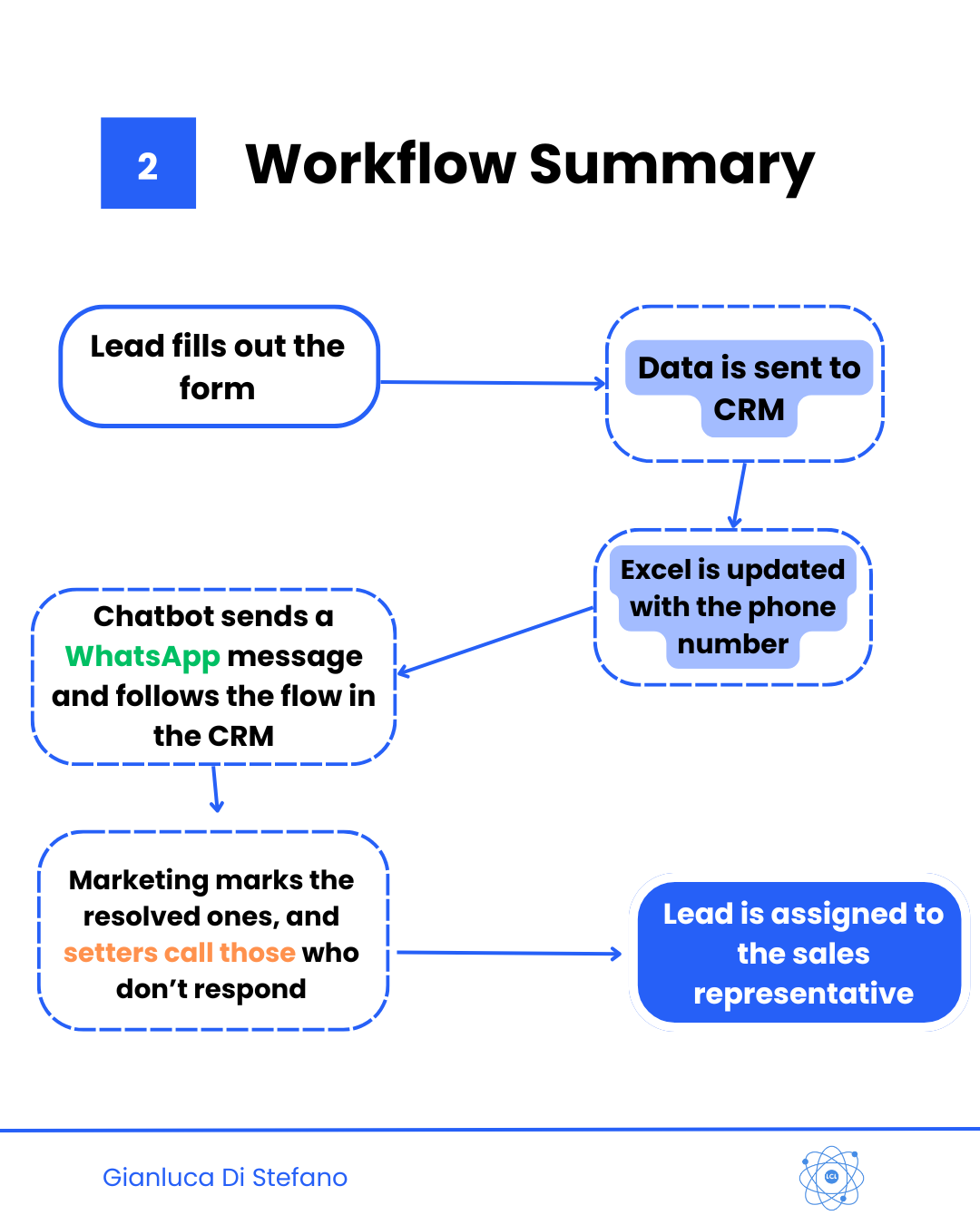How AI Chatbots can transform your Lead Generation strategy
How an AI chatbot reduced the workload of setters at an international company by 40%
In today's business world, using artificial intelligence (AI) to improve processes is very important. A good example is a case study where an AI chatbot reduced the lead generation workload by 40%. Let’s see how this happened and what we can learn from it.
1. The Context: making Lead Generation easier
The company needed to manage lead generation in Italy and Spain.
As the budgets increased, there were more leads to process, and the team needed a way to help "setters".
Setters are people who call leads, qualify them, and update the CRM acting as a filter for individual customers and with more leads, it was clear that automation could help reduce their workload.
2. Preparation: choosing the right AI Chatbot
To solve this, we chose Keplero AI as our chatbot provider.
This company offers a chatbot that works with websites, CRMs, and WhatsApp. The chatbot would help automate the process of contacting and qualifying leads.
3. Workflow: how the process works
Here’s how the process was set up:
A lead fills out a form on a landing page.
The chatbot automatically contacts the lead via WhatsApp.
The chatbot collects information and sends it to the CRM.
Setters only call the leads who do not answer on WhatsApp.
This system allowed the team to focus only on unresponsive leads, reducing the amount of work for setters.
4. Lead qualification questions
The chatbot asked questions like:
Do you want more information?
What is your profession?
Are you already our customer?
Do you have any current projects?
Which province are you located in? (This helps assign a sales rep)
These questions helped qualify the lead before further action, making the process faster and more efficient.
5. Technical Setup: connecting the system
Technically, we:
Connected the CRM to the chatbot using APIs.
Created an app on Meta to let the chatbot use the company’s WhatsApp number.
Used Zapier to automate the data flow from the form to an Excel sheet, which triggered the chatbot messages.
This setup made the whole process automatic, with all lead tracking done through the CRM.
6. Results: 40% less work for setters
In the first four months, the system processed 767 leads, with 292 (38%) managed completely by the AI chatbot. This saved the team 60 hours of work, which equals about seven full days of work for a setter.
7. Other benefits and future Plans
The chatbot also brought other benefits:
Language adaptability: it could talk to leads in different languages, depending on the country.
Personalization: it adjusted responses based on the answers from leads.
Brand awareness: the bot could "learn" the company’s website and documents, becoming more knowledgeable about the brand and products. This could help the chatbot become a full customer service tool in the future.
Conclusion
This case study shows how AI chatbots can improve lead generation. By using AI in everyday workflows, companies can save time, reduce manual work, and make lead qualification faster.
For companies wanting to grow, using AI chatbots could be a key strategy for success in the digital age.
Would you like to connect?
You can visit my website or add me on LinkedIn where everyday I share short new content about my experiences and what I'm passionate about.




